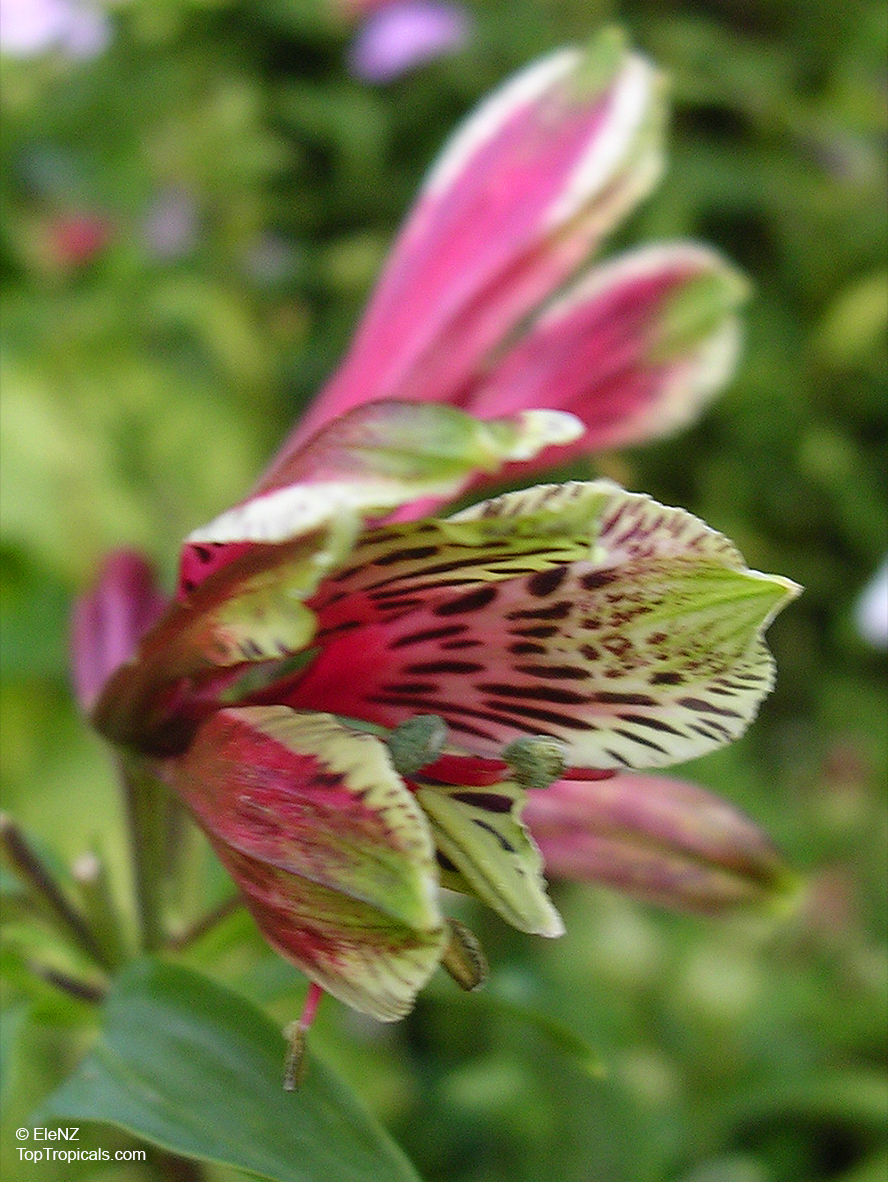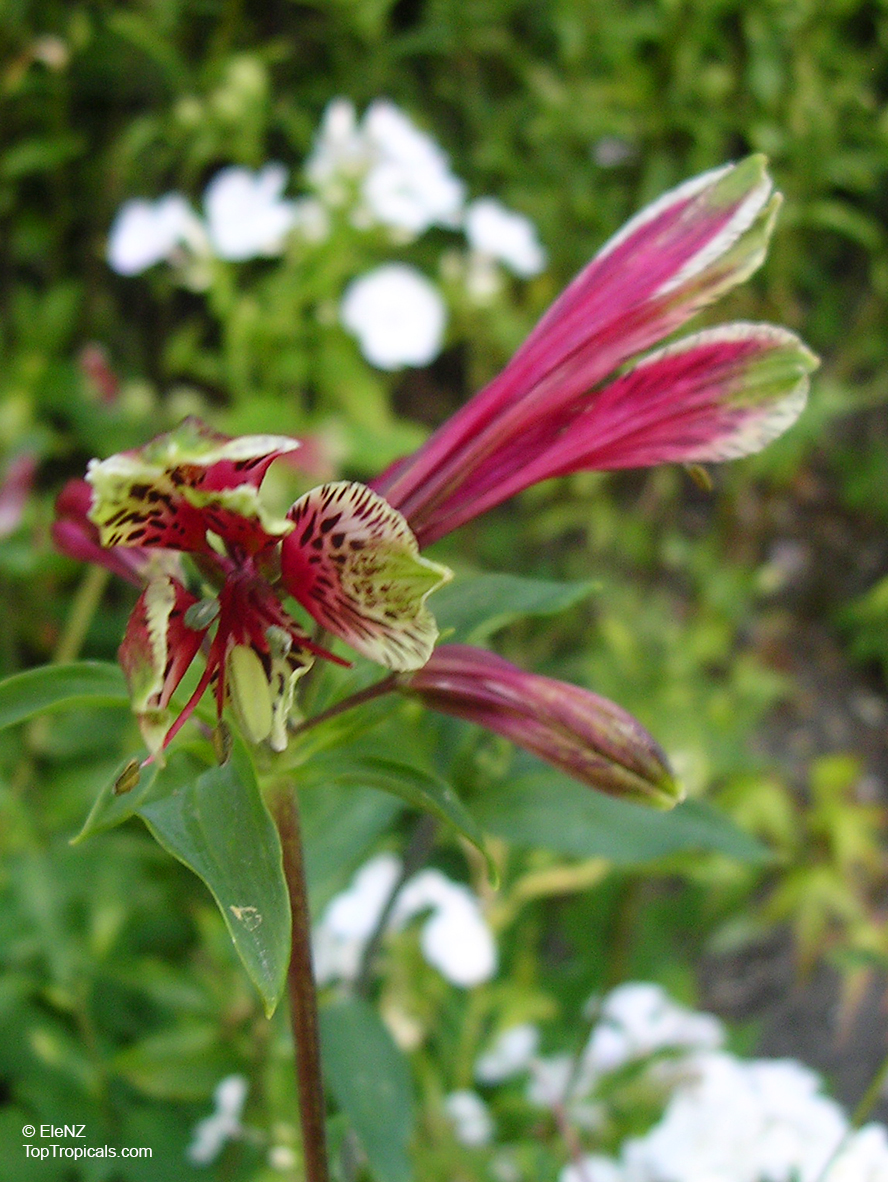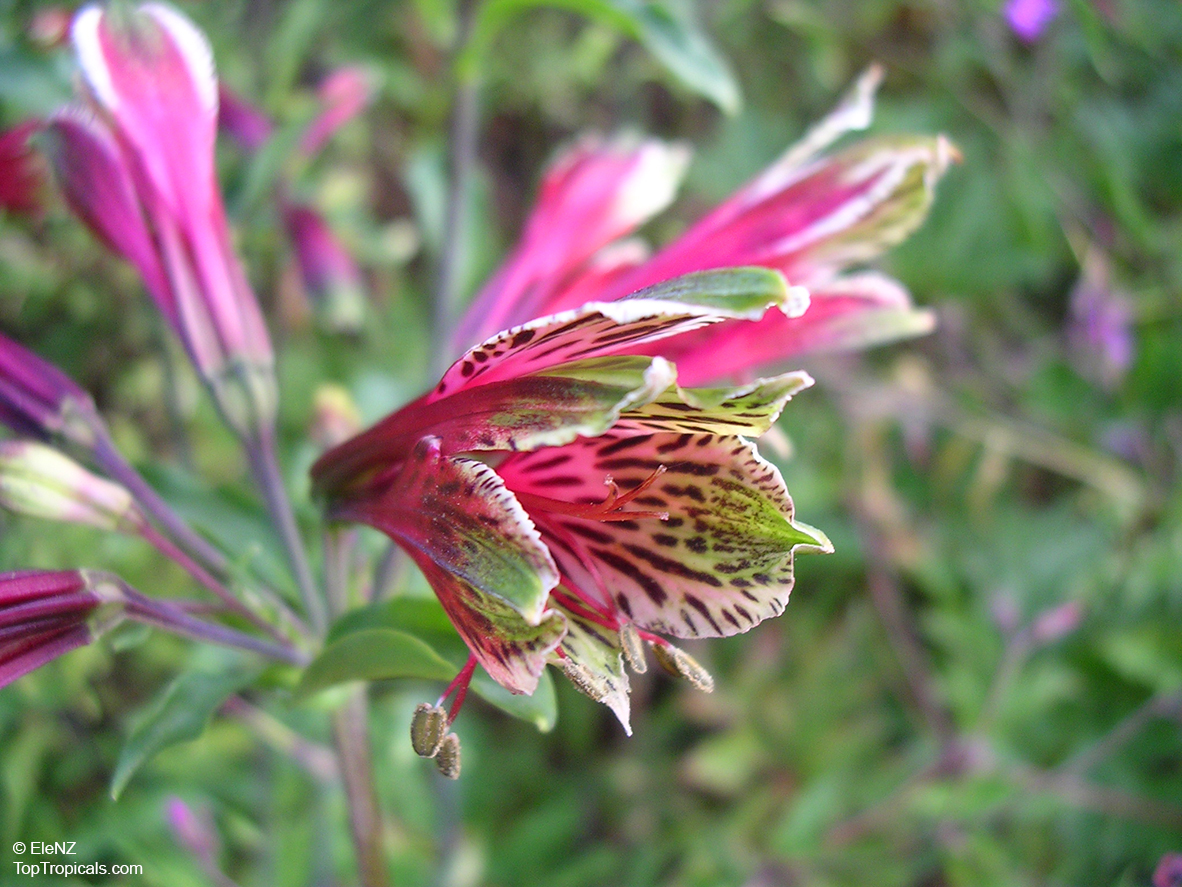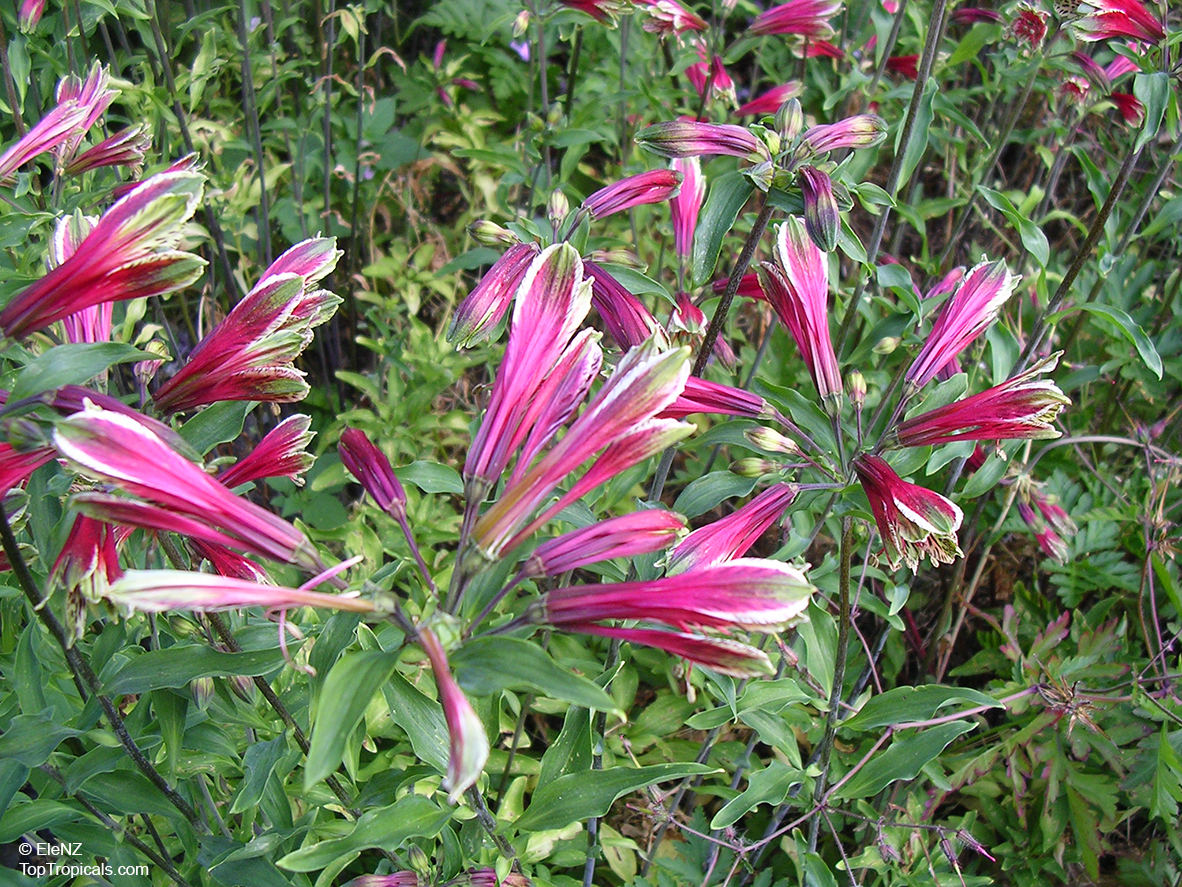Alstroemeria psittacina (Parrotlily)
Top Tropicals Plant Encyclopedia
Botanical name: Alstroemeria psittacina
Common names: Parrotlily, Parrot Flower, Red Parrot Beak, New Zealand Christmas Bell
Family: Alstroemeriaceae
Origin: northern Brazil









Parrotlily is a small, evergreen to sparsely deciduous shrub, usually 2-5 ft tall and 3-4 ft wide. A woody perennial that is grown commercially as a root ball plant and is known for its bright unusual color and as a long blooming perennials. Parrotlily loves regular water, when established tolerates more moderate water. In cold regions, grow parrotlily in a pot and bring it in during winter months to prevent it from freezing. It should be grown in USDA Zones 7 -10 and is mature cold hardy in temperatures at least to the lower 30s F for a short time.
Parrotlily is attractive to bees and butterflies and hummingbirds, making it an ideal plant to attract pollinators to the garden. The unusual color and long blooming season of these flowers make them popular in cut flower arrangements. Plantings of parrotlily in mass can be quite striking.
When growing in containers, as houseplants, or in colder climates, make sure to provide containers that are 18 to 24 inches in diameter with adequate drainage. The parrotlily prefers slightly acidic, fertile soil and full sun. Keep the soil evenly moist and water the plant from above to prevent water from getting into the center of the plant and rotting the root system. Keep the soil temperature warm, but not hot. Add a layer of mulch to help keep the soil moist and regulate temperature during the colder months. Fertilize parrotlilies, depending on the soil pH, once or twice a year with a slow- release granular fertilizer. Prune any dead or damaged branches anytime and always deadhead spent flowers to encourage new blooms.



